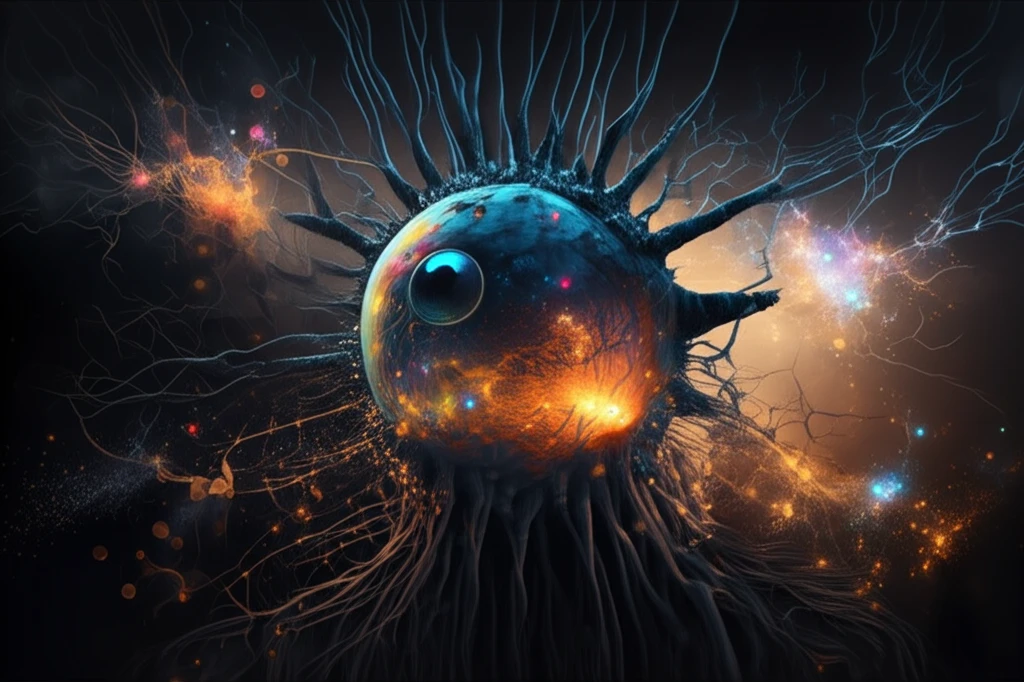
Vision Loss Mystery: Could It Be Leber Hereditary Optic Neuropathy?
"Decoding the genetic puzzle behind progressive vision loss: A closer look at Leber Hereditary Optic Neuropathy (LHON) and the importance of early diagnosis."
Imagine gradually losing your vision, colors fading, and light becoming your enemy. This is the reality for individuals experiencing Leber Hereditary Optic Neuropathy (LHON), a maternally inherited mitochondrial genetic disease that affects vision. While rare, understanding LHON is crucial for early diagnosis and intervention.
In a recent clinical challenge published in JAMA Ophthalmology, doctors investigated the case of a 60-year-old man presenting with progressive painless vision loss over six months, accompanied by photophobia and impaired color vision. The patient’s symptoms began in his right eye and progressed to his left eye four months later. His medical history included hypothyroidism and a meningioma of the cervical spine.
The patient had undergone previous evaluations for suspected autoimmune retinopathy, with normal results for serum antibodies, blood tests, and serologies. A neuro-ophthalmologic evaluation, including magnetic resonance imaging (MRI) of the brain and orbits, was also unremarkable. This case highlights the diagnostic challenges and the importance of considering LHON in patients with unexplained vision loss.
What is Leber Hereditary Optic Neuropathy (LHON)?

Leber Hereditary Optic Neuropathy (LHON) is a maternally inherited mitochondrial genetic disease primarily affecting the optic nerve, which transmits visual information from the eye to the brain. LHON leads to the degeneration of retinal ganglion cells (RGCs), particularly the smaller axons in the papillomacular bundle. This degeneration results in progressive vision loss, typically starting in one eye and then affecting the other.
- Genetic Inheritance: LHON is maternally inherited, meaning it is passed down from a mother to her children. All offspring of an affected mother are at risk of inheriting the mutated mitochondrial DNA.
- Typical Onset: LHON typically affects young adults, predominantly males, between the ages of 15 and 35, although onset can occur later in life.
- Vision Loss: The hallmark of LHON is subacute, painless vision loss. Initially, the vision may be blurred or clouded, progressing to a more severe visual impairment over weeks to months. The central vision is particularly affected, leading to difficulties with reading, driving, and facial recognition.
- Color Vision: Color vision is often impaired early in the disease process, with a reduced ability to distinguish colors, especially red and green.
- Photophobia: Many individuals with LHON experience photophobia, or increased sensitivity to light, which can cause discomfort and eye strain.
The Future of LHON Treatment
While there is currently no cure for LHON, advances in genetic testing and a better understanding of the disease mechanisms are paving the way for potential treatments. Gene therapies and drugs like idebenone are being investigated to prevent progressive vision loss. Early and accurate diagnosis remains critical to ensure appropriate management and to avoid unnecessary treatments based on misdiagnosis. Individuals experiencing unexplained vision loss, particularly with a family history of similar symptoms, should consult with an ophthalmologist or neuro-ophthalmologist for thorough evaluation and genetic testing.
